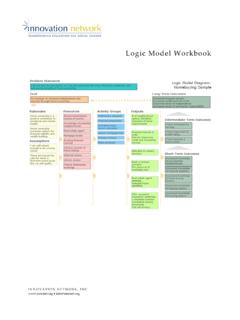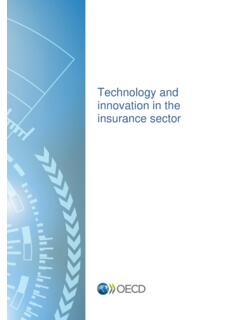Transcription of Review of Technology Adoption Models and Theories to ...
1 Journal of Information Technology and Digital World (2020) No. 04 Pages: 207-212 DOI: 207 ISSN: 2582-418X Submitted: Accepted: Published: Review of Technology Adoption Models and Theories to Measure Readiness and Acceptable Use of Technology in a Business Organization Thando Dube, Rene Van Eck, Tranos Zuva Department of ICT, Vaal University of Technology Vanderbijlpark, South Africa Abstract: It has been evident that innovative technologies have evolved in the past few decades, notably, in the computing discipline. As a result, Technology Adoption Models and Theories are deemed vital to business organizations to assess if end users are ready and accept new technologies. Therefore, requirements to Review prevailing Technology Adoption Models and Theories which seek to assist business organizations to assess the readiness and acceptance of these new technologies, otherwise, such initiatives become obsolete and do not support core business processes, as it was originally intended.
2 This paper reviews three Technology Adoption Models relevant to information systems and information Technology studies on the latest technologies such as ERP, cloud computing, and other systems implemented in business organizations. The study could assist to analyse the acceptance and utilization of new technologies. It can also be used to improve such Models and Theories in the Adoption of new technologies. Keywords: Technology Adoption Models , Technology acceptance Theories , Technology acceptance model (TAM), Technology -organization-environment (TOE), unified theory of acceptance and use of Technology (UTAUT) Introduction In the past few years, the computing discipline has massively progress particularly in the information systems (IS) and information Technology (IT) areas, completely altered our backgrounds and the manner in which people generally cooperate with each other and the manner in which an organization conduct business, mostly, in a noble way (LeRouge & Webb, 2004).
3 Newly adopted technologies are extensively implemented, installed, and used by numerous organizations who pursue to improve an organization s business processes, information, and data between departments within an organization, also by assisting an organization to outperform its competitors (Kr & Prakash, 2011). Even though the Adoption of new Technology creates opportunities in business, by making possible what was not possible before, it could, however, generate problems by disturbing the routines and processes, of the way employees of an organization, such as system users, are used to conduct their tasks in a particular way. Adopted Technology is unpredictable and it could have a negative impact on an organization in a way that newly implemented systems might end up not being used (Sternad & Bobek, 2013).
4 Users get comfortable in using their old systems and they might hesitate to use the newly adopted system due to the fear of making mistakes (Kankanhalli, 2016). Not all users react the same way, some users are reasonably innovative, tactical, and are ready to consider the benefits presented to them, but others are content to carry on doing things in the same way in which they always have and they do not see a need to adopt new Technology (Soh et al., 2000). Technology Adoption has been studied widely in the area of information systems (IS). The aim of many studies on Technology Adoption has been at identifying, predicting, and describing variables that affect Adoption behavior both in individuals and in organizations to embrace and implement technological innovations. As a result, frameworks and conceptual Models were developed which assist in understanding the association of the acceptance behavior variables.
5 This paper, therefore, seeks to Review these studies, examine the effect of the TOE, TAM, and UTAUT to clarify the Adoption of Technology and their narrow descriptive influence. This study, therefore, identifies the variables enlightening the recent technologies Adoption such as enterprise resource plan (ERP), radio-frequency identification (RFID), electronic data interchange (EDI), knowledge management (KM) and Review the challenges, issues of the Models , the capacity to gain an accurate and deep understanding of Models used to measure the acceptance of the adopted Technology (Gangwar et al., 2014). In this paper, we have Journal of Information Technology and Digital World (2020) No. 04 Pages: 207-212 DOI: 208 ISSN: 2582-418X Submitted: Accepted: Published: considered the organization-based findings founded on UTAUT, TAM, and TOE.
6 Hence this paper is based on an overview of the three prevailing Technology Adoption Models and Theories : TAM, TOE, and UTAUT. Methodology This paper comprehensively reviews and explores three Technology Adoption Models and Theories relevant to IS and IT studies published between 2003 and 2018. It focuses on the latest information technologies (IT s) such as e-commerce, enterprise resource, ERP systems, biometric systems, cloud computing, IoT, and KM systems deployed in business organizations, to assist the researcher to better explain such Models , to categorically select an ideal model for this study to assess a new Technology prior deployment to lessen IT project failures and IT-related wasteful expenditure. To ensure that this paper does not miss out on vital studies, researchers further search available sources using search criteria comprising of the full names of the three Models and its abbreviations: Technology acceptance model , Technology -organization-environment and unified theory of acceptance and use of Technology and other variants such as Technology Adoption , individual acceptance and use of IT, ease of use of IT.
7 This paper only focuses on IS and IT technologies Adoption Models and Theories papers with an emphasis on Technology Adoption in both IS and IT fields. Background According to Khasawneh (2008) Technology Adoption is defined as the first use or acceptance of new Technology or new system. Technology Adoption is clarified by numerous Theories and Models such as the Technology acceptance model (TAM), innovation diffusion theory (IDT), the theory of reasoned action (TRA), Theory of Planned Behaviour (TPB), Technology -organization-environment (TOE); and unified theory of acceptance and use of Technology (UTAUT). Zhenhua et al (2008) have categorized Adoption into three echelons: organizations, groups, and individuals. TAM, UTAUT, and TOE are extensively used in reviewing the Adoption of Technology by the side of the organizational level.
8 However many studies have found TAM as an effective, vigorous, and extremely leading model in predicting the Adoption of Technology by the side of the organizational level (King & He, 2006). Many reviews of TAM studies conceded that TAM and its modified versions expanded substantial theoretical and practical provision, hence they are the most extensively used by IS researchers as opposed to alternative Models (Amoako-Gyampah & Salam, 2004; Legris et al., 2003). TAM has numerous advantages such as it is frank and intended to deliver a suitable clarification and a prediction of various users acceptance of IT in organizational contexts, it has been studied well and it is a leading model for inspecting Technology Adoption (Carr et al., 2010). Studies have argued that UTAUT was designed for foreseeing the Adoption of Technology at the individual level, however, there are some few studies at the organizational level (Oliveira et al.)
9 , 2011; Williams et al., 2009; Zhenhua et al., 2008). Hence, the TOE framework was developed as a prevalent theoretical view of Technology Adoption in IT, numerous authors have verified its variables for the acceptance of numerous technologies (Thiesse et al., 2011; Wang & Chen, 2006). Oliveira et al (2011) state that, IDT Theories are similar to the organizational context and expertise of the TOE framework, though TOE is more significant than IDT as per the analysis of (Zhu et al., 2003). This paper will Review UTAUT, TAM, and TOE. Technology acceptance model (TAM) TAM is the Technology Adoption model that has been extensively used and studied for predicting the Adoption and use of the adopted Technology in an organization. Many studies on adopting new technologies have engaged TAM and they all prove that TAM is an extensively appropriate model that describes the reasonable extent of the adjustment in the Adoption of Technology and use (Au & Zafar, 2008; L.
10 Da Chen & Tan, 2004). TAM speculates that Technology Adoption is determined by perceived usefulness and perceived ease of use. Perceived usefulness is defined as the degree to which an employee of an organization believes that using a particular system would enhance his job performance , and perceived ease of use is defined as the degree to which an employee of an organization believes that using a particular system would be free of effort (Au & Zafar, 2008). In TAM, an employee s perception of the usefulness and ease of use of a new Technology defines an employee s attitude towards using the new Technology , which in turn defines whether an employee has an intention to use the newly adopted Technology and continue using it (Schillewaert et al., 2005). TAM is based on the Theories of reasoned action and planned behavior, which differentiates between principles, attitudes, beliefs, and intentions (Au & Zafar, 2008).


